What’s the Difference?
Both the Jaguar and Jazzmaster have many similarities. When it comes to which one you’d choose, it can be quite tricky to decide. So let’s point out what sets them apart:
| Specs |
Jaguar |
Jazzmaster |
| Scale Length |
24” |
25.5” |
| Number of Frets |
22 |
21 |
| Pickups |
Bright Sounding Metal Shielded Narrow Single-Coils |
Warm Sounding Wide Jazzmaster Single-Coils |
| Switching |
Rhythm/Lead Circuit & Individual Toggle Switches for Pickups and Bass-Cut “Strangle” Switch |
Rhythm/Lead Circuit & 3-Way Switch
|
Scale Length
The Jazzmaster bears the typical Fender 25.5-inch scale length, which is the same as the Strat and Tele. This instrument will feel instantly familiar to anyone who has played a Fender, or any contemporary guitar for that matter. There is a particularly comforting feel to the Jazzmaster that makes it an incredibly quick to adjust to no matter the situation you find yourself playing in. It simply comes down to preference here: you’ll either be in camp Jazzmaster, or the shorter scale length camp with guitars such made by the likes of PRS and Gibson.
In contrast, the Jaguar’s 24” scale length is much shorter than most guitars, giving the strings a slinkier, looser feel, making bends and vibrato much easier. Tonally you may hear a rounder, more instantly gratifying sound and vibrations through the body of the guitar, compared to the focused and snappy 25.5” scale. The shorter scale lends itself well to riff rock sounds, with that bounce you can only find from the strings dipping out and returning to tune. That can extend to how you play, as it might encourage to play with more aggression or verve. In 1962, Fender marketed the Jaguar as “faster and more comfortable” for its shorter scale length. While we like to think most modern guitars are relatively easy to adjust to playing no matter the size or length, the Jaguar will undoubtedly be easier to handle for people with smaller hands who might struggle to bridge large intervals on the fretboard.
Number of Frets
Typically, the Jazzmaster has 21 frets, while the Jaguar has 22. The Jaguar’s extra fret only makes that feel of the shorter scale length more noticeable, as the distance between the frets is condensed to fit in one more fret. Nothing here is overwhelming or radically different to most other modern guitars in the way they handle or in how the neck feels. The Jazzmaster aligns closely to a typical Strat or Tele, while the Jaguar offers a touch more versatility.
Pickups
Perhaps the starkest difference between the Jaguar and Jazzmaster is the construction of the pickups.
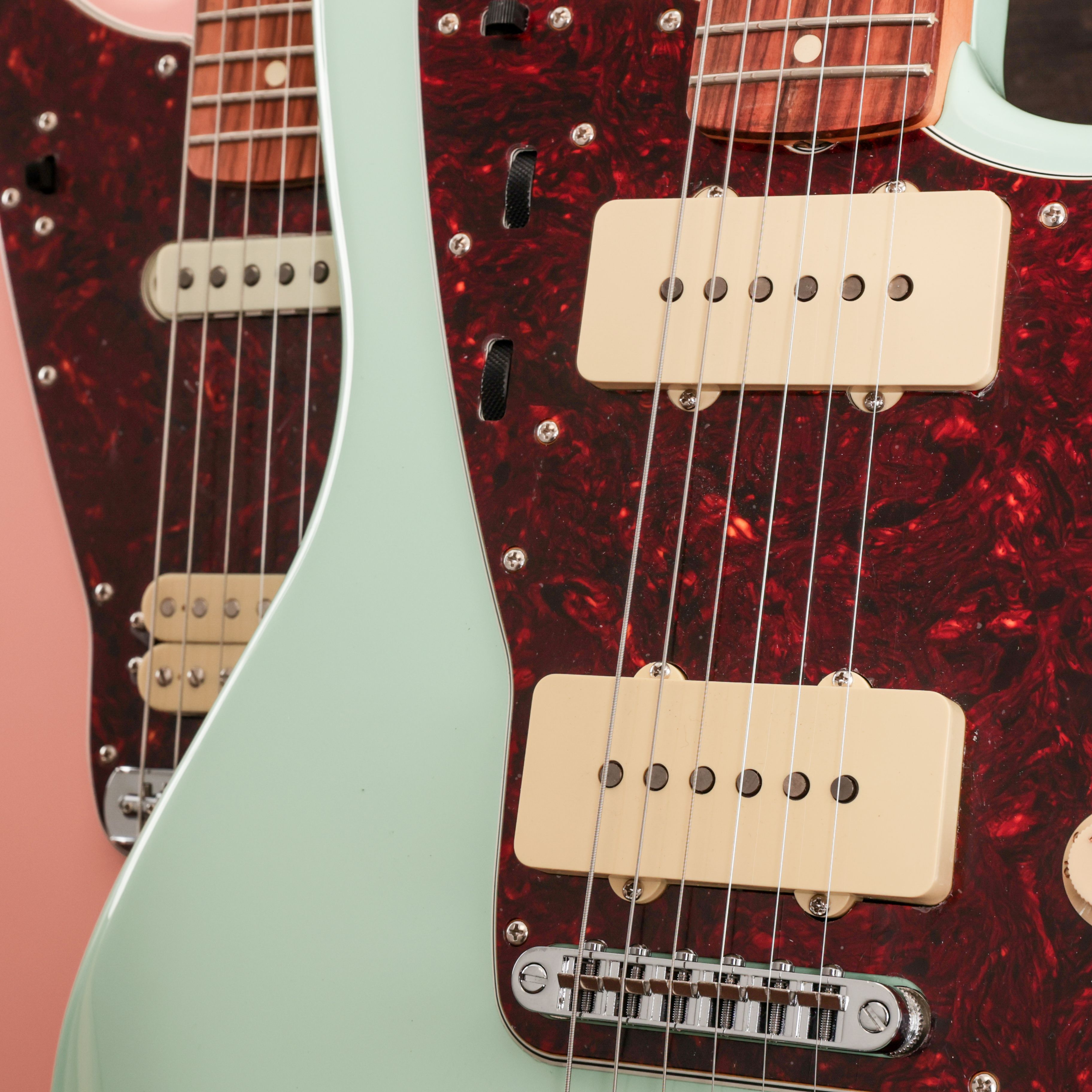
A common misconception is that Jazzmasters contain P-90 pickups but that is not the case. Jazzmaster pickups are unique, in that they make use of single-coil pickups that are neither like a Strat, Tele or like the P-90s of a Jaguar. While in the design process for the Jazzmaster, Leo Fender was looking for a tone than the Strat and Tele which would be something that jazz guitarists would appreciate. Whilst retaining all the top end sparkle of a great strat pickup, this tweaked pickup has shorter poles and a wider magnet wind. It provides a more present midrange and fuller bass. Their low output means that they are still clean and twangy, perfect for shimmery chords, but with a mellower, rounder tone.
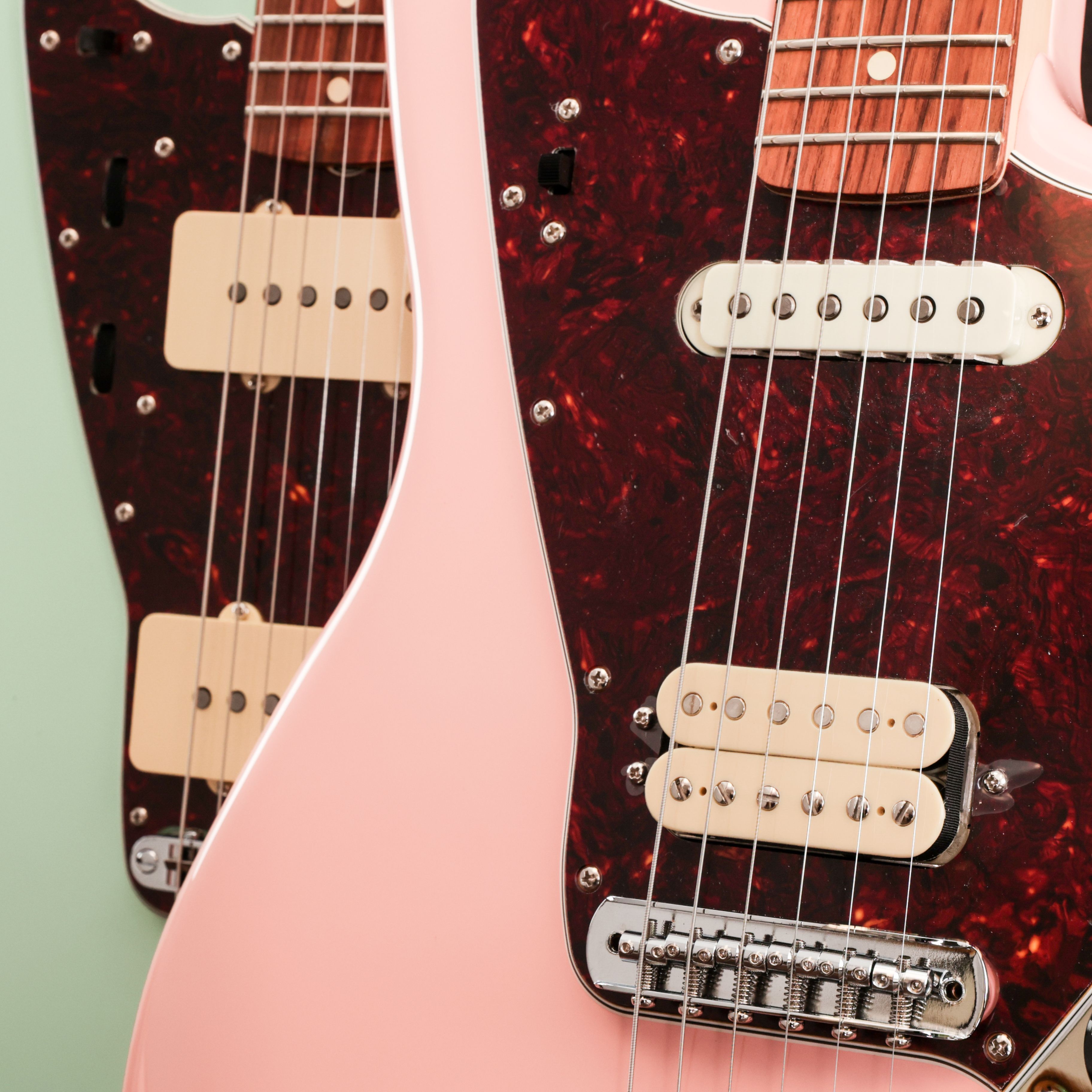
Jaguar pickups are more similar to that of a Strat, with a brighter tone. But in response to the emergence of higher volume levels in the early ‘60s, Jag pickups utilise a metal shielding claw around the pickups to reduce 60-cycle hum (or 50-cycle hum in the UK and Europe). This additional metal component has a similar effect to the brass baseplate on a Tele bridge pickup which gives it a brasher top-end resulting in a more aggressive sound than a Strat or Jazzmaster. Jaguar pickups are also mounted directly to the body of the guitar, which adds a little bit of extra oomph in the attack. This is great for playing with distortion for a really gnarly and cutting sound.
Both guitars broadly stick to their traditional sounds across the main Fender lines, like the Players II Series, American Professional II, Vintera II and Squier Classic Vibe. You may occasionally be able to get your hands on an alternatively configured model from the Made in Japan series and other limited edition runs.
Bridges
Jags and Jazzmasters have the same great tremolo system and bridge. The tremolo itself is brilliant – the notes glide out when you smoothly press and release the long arm, as the pivot and spring are mounted underneath the metal plate visible on the body. It feels satisfyingly luxurious and it’s an aspect that players love when looking to add unique texture to their sounds – think of the drifting melodies of My Bloody Valentine.
The traditional bridge does however cause some issues, as the strings are liable to slip out of their seats when you strum harder. Fender’s modern models are equipped with more reliable tune-o-matic style or Mustang bridges, but some players still love the old school setup.
Switching

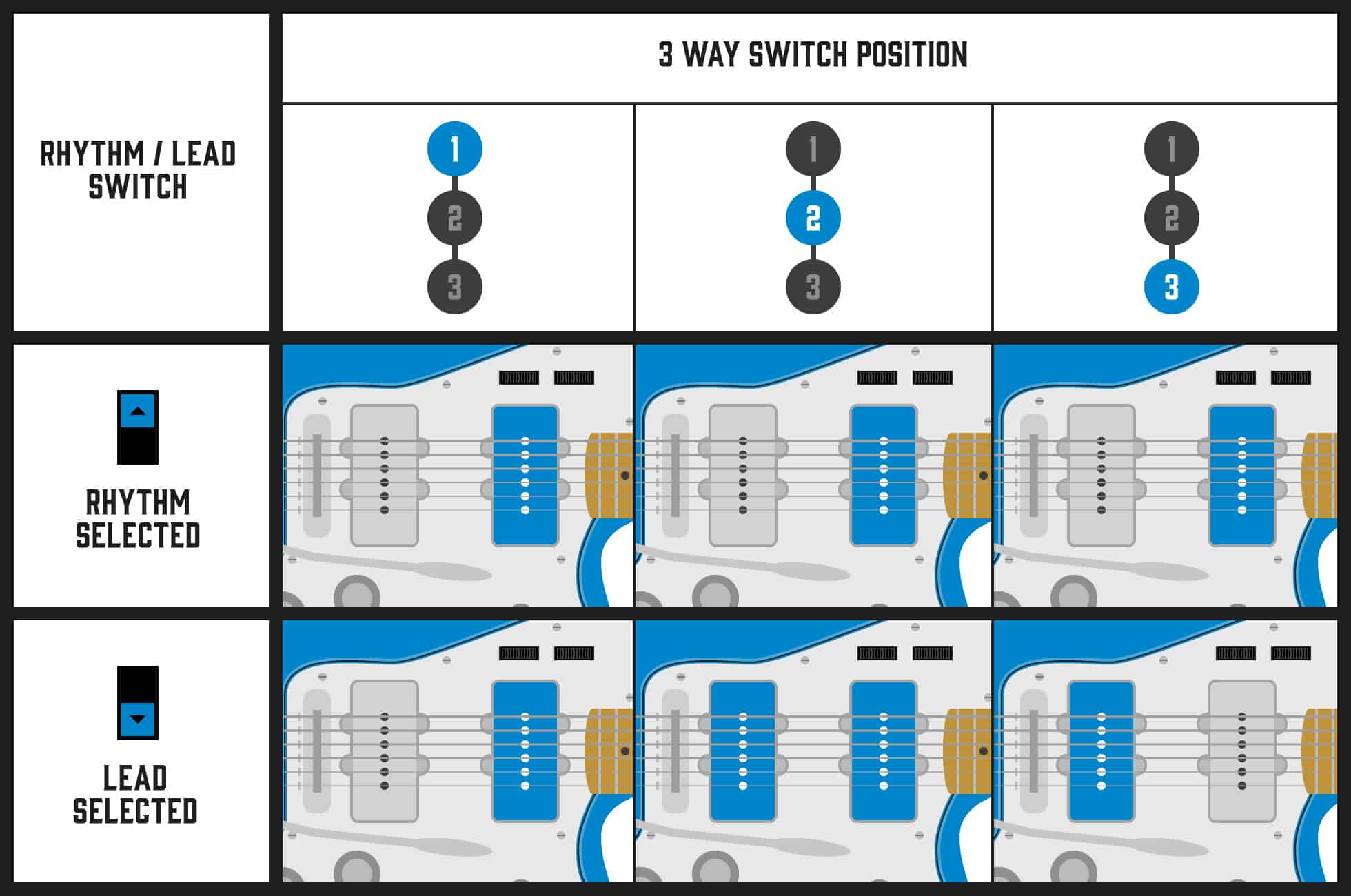
The switching is where it all happens with the Jazzmaster and Jaguar and it’s what defines them in the guitar world, offering you a unique playing experience. Both offer independent lead and rhythm circuits, which allow for on-the-fly tone changes and give you the chance to detail your sound in a way other guitars simply cannot.
Jaguars and Jazzmasters function quite similarly. In the lead mode, the guitar functions as you’d expect, with a tone knob, volume and pickup selector, but only for the bridge pickup and for the bridge and neck pickups together.
In this lead mode, the Jazzmaster has a conventional 3-way switch, while the Jag splits the circuit between three individual switches. The first two switches control the individual neck and bridge pickups, while the third switch, known as the “strangle switch” is a bass-cut control (a high pass filter) that produces the iconic jangly tone. Watch below as Oz explains how Jaguar switching works…
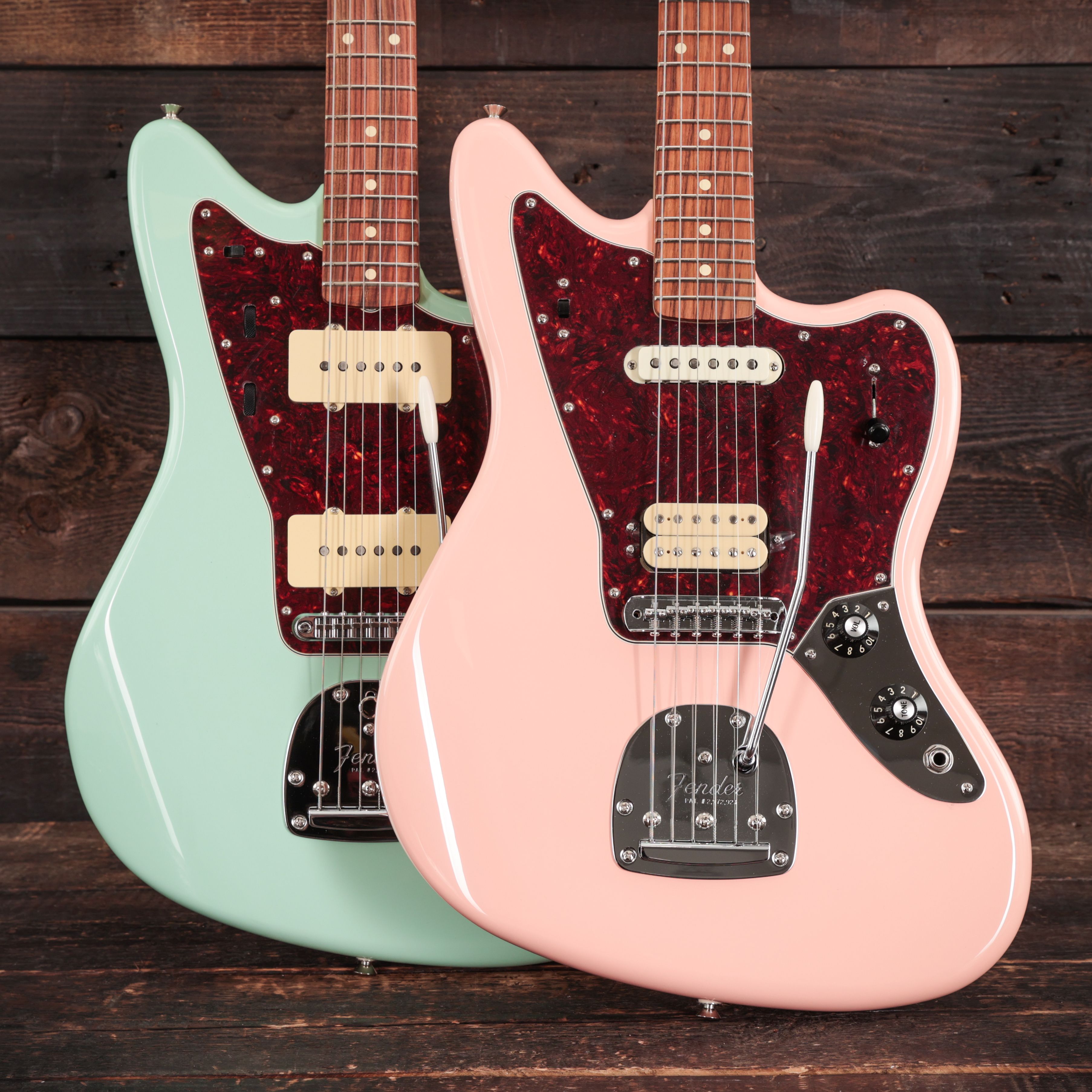








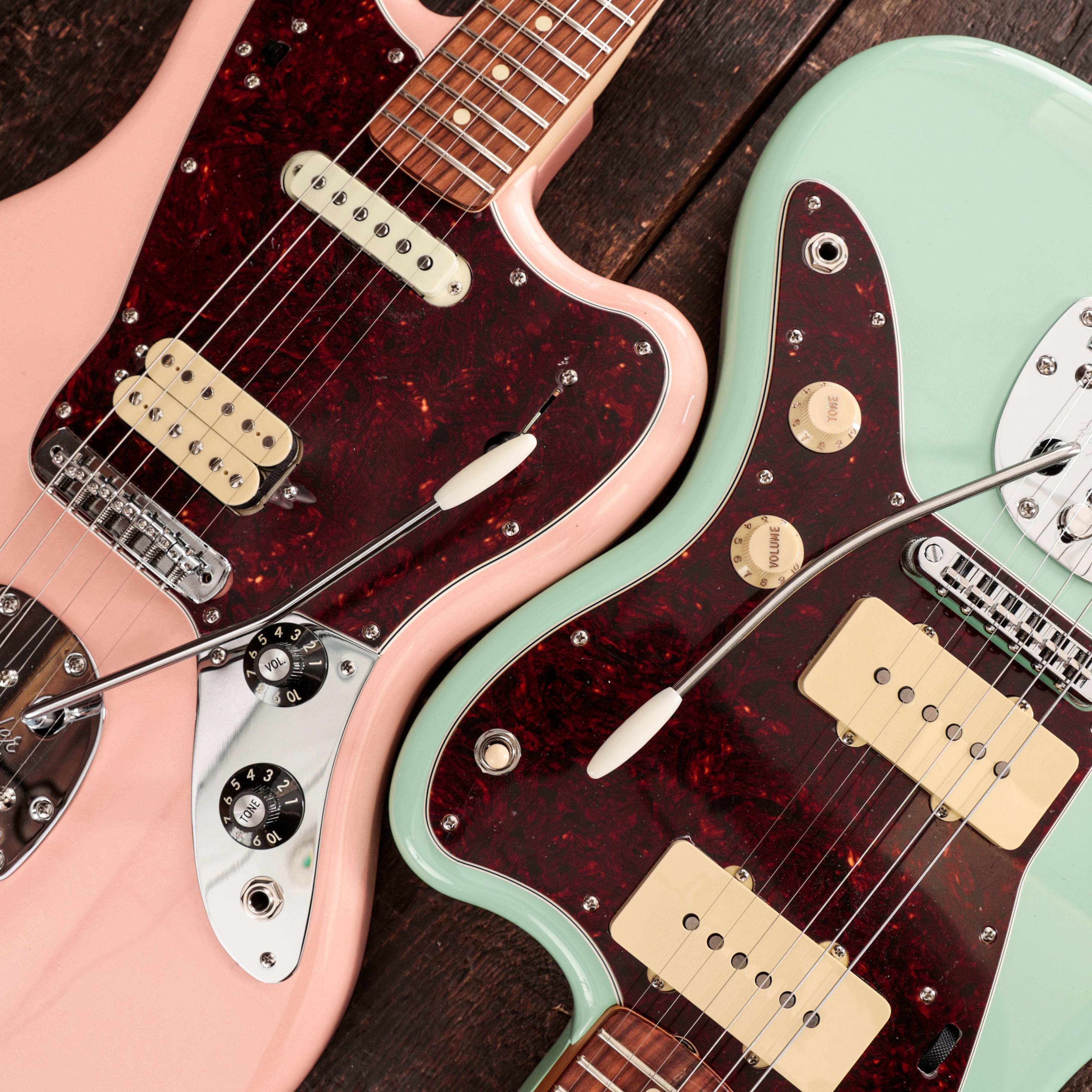
Responses & Questions